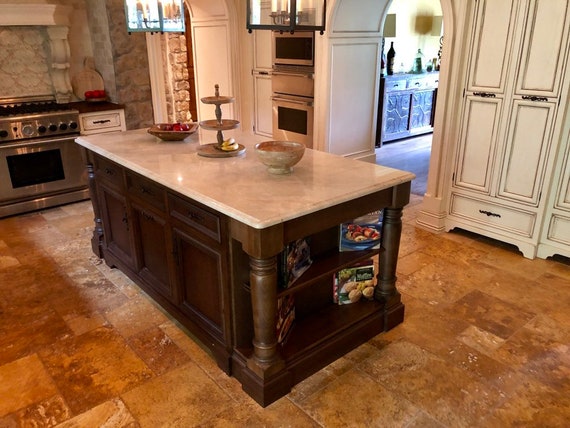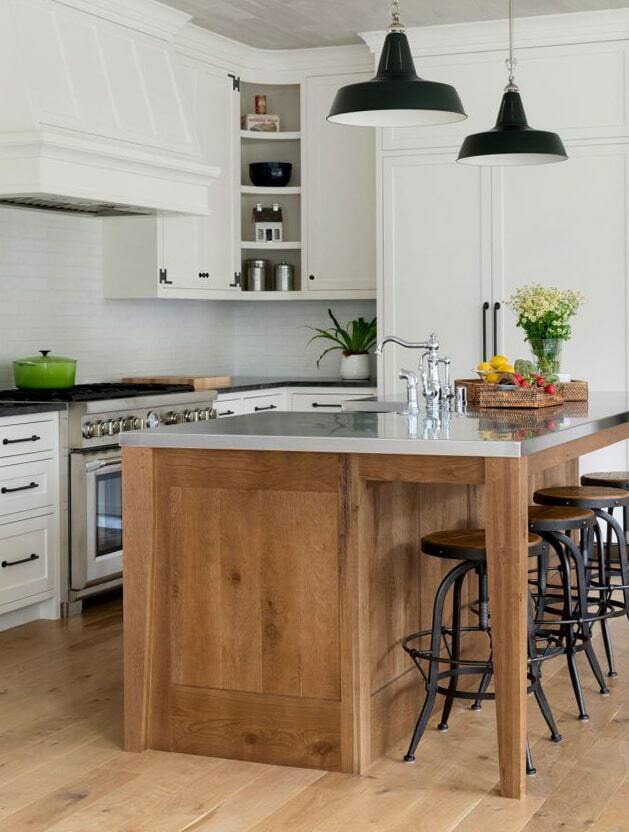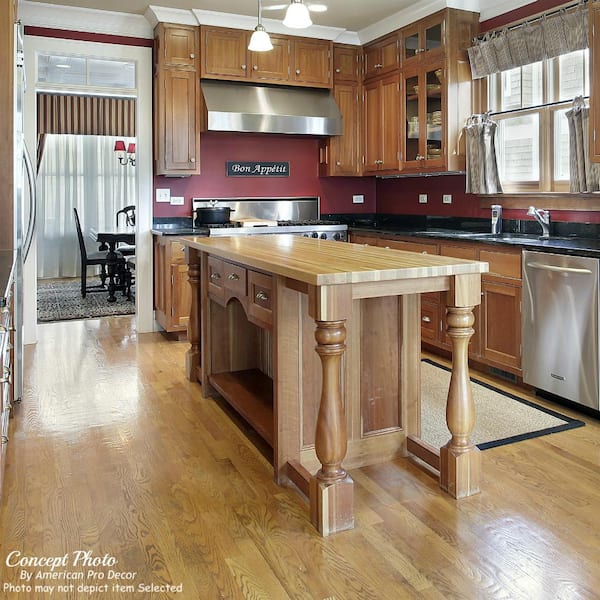Upgrade Your Kitchen with Stylish Kitchen Island Leg Solutions
Wiki Article
Leading Considerations When Choosing a Cooking Area Island Leg for Modern Cooking Area Interiors
In the realm of modern cooking area insides, the choice of a cooking area island leg is critical, influencing both aesthetics and performance. As these elements link, they increase additionally questions about how to achieve the best equilibrium in between design and practicality, leaving one to consider the ramifications of each decision on the overall kitchen experience.Product Options
When it pertains to choosing a kitchen island leg, material selections play a critical duty in both visual appeals and functionality. kitchen island leg. The most usual products consist of wood, steel, and composite options, each offering distinct benefits and potential drawbacksTimber is favored for its warmth and timeless appeal, offering a timeless appearance that matches different kitchen designs. It is very functional, enabling personalization in regards to shades and finishes. Timber may need even more upkeep to prevent warping or damages from dampness.
Steel, on the various other hand, brings a industrial and modern panache to cooking area islands. Stainless steel and functioned iron are preferred options, known for their toughness and resistance to put on. They can endure the roughness of day-to-day use however might do not have the warmth related to timber.
Composite materials, such as engineered timber or synthetic blends, supply an equilibrium in between price, longevity, and aesthetic appeals. These choices are commonly designed to simulate the look of all-natural materials while supplying resistance to spills and scrapes.
Ultimately, the option of product must straighten with the total kitchen layout and planned usage, making sure that the kitchen island leg is both aesthetically appealing and practical.
Design And Style
The design and style of a kitchen island leg significantly add to the overall aesthetic of the room, matching the chosen product. When picking the leg style, consider the building design of the cooking area. Smooth, minimal legs made of stainless steel or acrylic harmonize with contemporary styles, while ornate, transformed wood legs improve traditional or farmhouse aesthetics.Furthermore, the surface of the leg can affect the visual influence; a sleek chrome or matte black finish might evoke contemporary sophistication, while troubled timber talks to rustic appeal. The leg's shape likewise plays a crucial role-- straight, angular types share a more industrial feel, whereas rounded or tapered legs present a softer, much more inviting appearance.
Integrating decorative components, such as carvings or decorations, can include personality and personality to the cooking area island, more boosting its duty as a focal point. Inevitably, the selected leg style ought to not only align with the general kitchen layout but also show the property owner's individual taste, guaranteeing that the kitchen area island ends up being a practical and harmonious centerpiece within the modern-day cooking area interior.
Height and Proportions
Achieving the appropriate elevation and percentages for a cooking area island leg is essential for both capability and aesthetic appeals. Kitchen area islands generally vary in elevation from 28 to 36 inches, relying on their planned usage-- whether as a cooking surface area, eating area, or workspace. Criterion counter top elevation is around 36 inches, making it essential that the legs you choose complement this elevation to offer a smooth, integrated appearance.Proportions also play a vital duty in the aesthetic balance of the kitchen. A slender leg might be appropriate for a minimalistic or contemporary island, while a much more significant leg might be needed for rustic or standard layouts.
When choosing the height and proportions of the cooking area island leg, maintain in mind the overall style theme of your kitchen. This focus to information not just improves the functionality of the room but likewise adds to a aesthetically attractive and natural indoor style.
Stability and Assistance
Consistently making certain stability and support in cooking area island legs is essential for both safety and performance. A well-constructed kitchen island have to endure day-to-day use, including weight from appliances, food prep work, and celebrations. The option of legs should prioritize durable products and styles that can give adequate support.When reviewing stability, think about the leg's material-- aluminum, wood, or steel frequently supply superior stamina contrasted to lighter choices. Additionally, the style should feature a broad base to distribute weight equally and minimize the threat of tipping or tottering. For instance, legs created with an A-frame or cross-bracing can considerably enhance stability.

Incorporating these considerations will certainly not only enhance the general security of the kitchen space but also enhance the durability and capability of the kitchen area island, making it a beneficial centerpiece in contemporary kitchen insides.
Ending Up Touches
When it comes to completing a cooking area island, thoughtful completing touches can considerably enhance both its aesthetic charm and performance. Choosing the best leg design is crucial, but matching it with ideal information can transform the entire room. Take into consideration including attractive components such as toe kicks or walls that match the cabinets or floor covering Read More Here to create a seamless look.
advice Last but not least, the choice of coatings plays a pivotal duty in tying the style with each other. Whether selecting a matte, glossy, or distinctive coating, ensure that it aligns with the general theme of your kitchen area. A cohesive shade combination and product selection will raise the kitchen island, making it a captivating focal point. By taking note of these finishing touches, homeowners can develop a kitchen area island that is both practical and gorgeous, accommodating their way of life and style choices.
Verdict

In the world of contemporary kitchen area interiors, the choice of a kitchen area island leg is pivotal, affecting both appearances and functionality.The style and layout of a cooking area island leg considerably contribute to the total visual of the area, complementing the chosen product.Achieving the appropriate elevation and proportions for a kitchen island leg is critical for both performance and aesthetic appeals.Constantly ensuring stability and assistance in kitchen area island legs is important for both security and capability.In summary, choosing a cooking area island leg for modern-day interiors calls for careful consideration of product selections, layout style, height, proportions, and security.
Report this wiki page